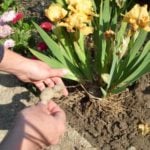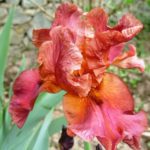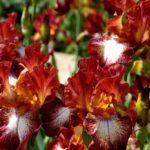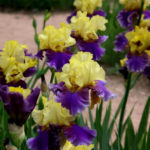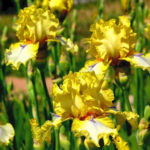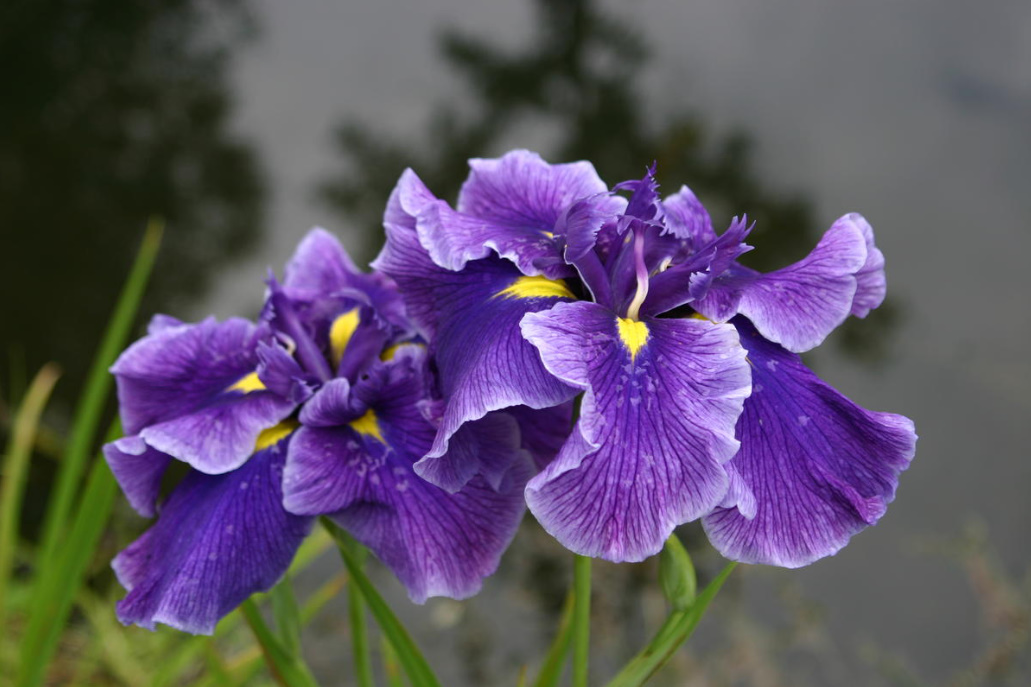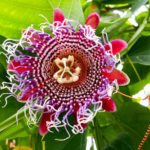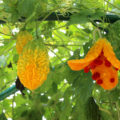Today we will meet with amazingly beautiful and still rare irises in suburban flower beds, which are called Iris spuria. They will become a real pearl of your garden, because their flowers are extremely beautiful, light and elegant, like large tropical butterflies.
Botanists refer them to the subgenus Xyridion, and they got the name spuria due to their similarity to Iris spuria. Currently, there are hybrids and varieties that are considered even less capricious than species, but today we will talk about the latter. This will give you the opportunity to know the nature of spuria irises and all the subtleties of their cultivation and reproduction.
Features
Spurias are very similar to orchids and (Iris xiphium. However, if you look closely at the iris flowers, you can see the characteristic signs of difference — unusually shaped lower lobes with a round bent plate, to which a horizontal grooved long nail leads. The upper lobes are also elongated and widely spaced.
Botanical dossier of iris spuria:
- rhizomatous;
- beardless;
- height — from 20 to 200 cm;
- several flowers on one peduncle (from 2 to 5 depending on the species);
- the color of the petals is from white to purple;
- the flowers are large, with a diameter of 7-15 cm;
- they bloom later than bearded irises, in late May or early June, and some varieties even in July;
- fruits are ribbed boxes with characteristic curved beaks;
- wind resistant;
- relatively cold – resistant;
- they are great in cutting — they retain their decorative effect in water for a week.
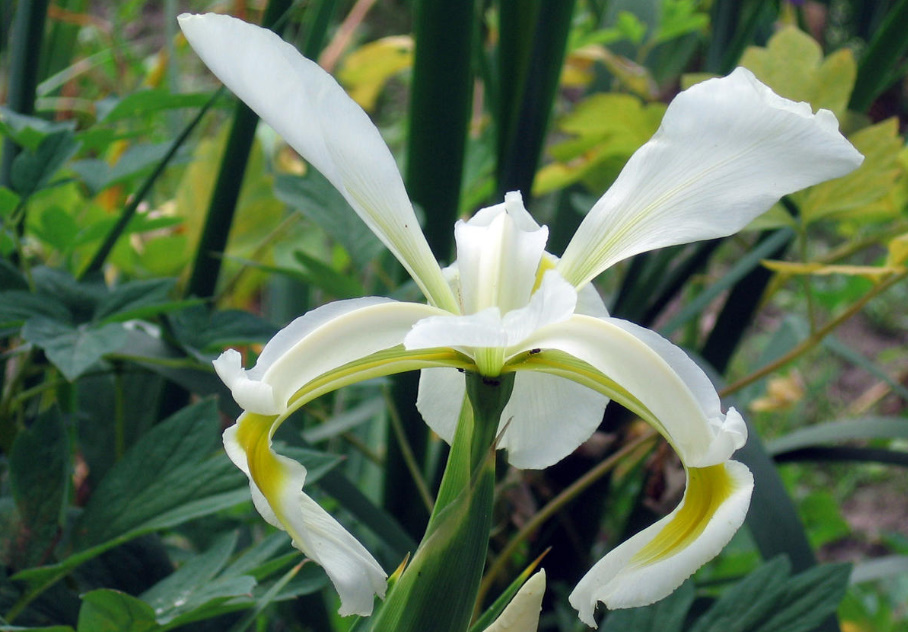
Reproduction
Vegetative: pieces of rhizome with 2-4 bundles of basal leaves. The optimal time is March or April, in the south and September. Planted beds should be watered during the month when they take root. They bloom in the second year.
By seeds: the seeds are covered with a parchment-like slightly swollen peel, which promotes their spread with water and wind. But it is because of it that they germinate slowly and for a long time (take note: not fully colored seeds germinate faster). Sown in September-October in a greenhouse. The first shoots appear after 3 months, and the entire germination period will stretch for 1-2 years. After 1.5-2 years, the seedlings are planted in a permanent place, and in the next 2 years a beautiful flowering plant is formed.
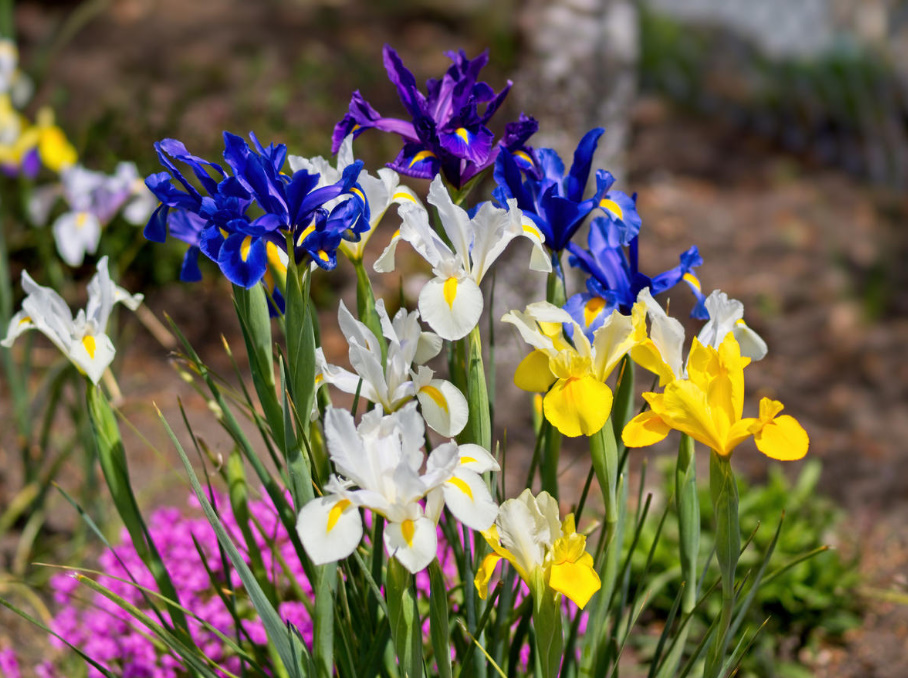
Landing place
They grow and bloom better in full sun or partial shade. They prefer well-drained neutral or slightly acidic loams with a sufficient amount of water, since the lack of moisture slows down the growth of the plant, shortens the flowering period, negatively affects the setting of seeds.
Nuances of care
Regular watering, weeding, loosening; 2-3 fertilizing during the growing season with a complex mineral (2-3%) fertilizer — or organic (preferably liquid). To prevent the defeat of heterosporiosis, especially in 3-4-year-old plants, a one- or two-time treatment with a 2-3% solution of Bordeaux liquid or its substitutes is carried out. Frequent transplants are not needed: in one place, without loss of decorativeness, spuria irises grow and bloom for up to 8-10 years.
Main types
The grace, grace of the flowers, the texture of the leaves of iris spuria immediately amaze the imagination of even a sophisticated lover of this flower culture.
Iris crocea
Iris crocea, syn. I. aurea is a resilient rhizomatous beardless Spartan with a height of up to 1.2 m. It comes from India, from Kashmir.
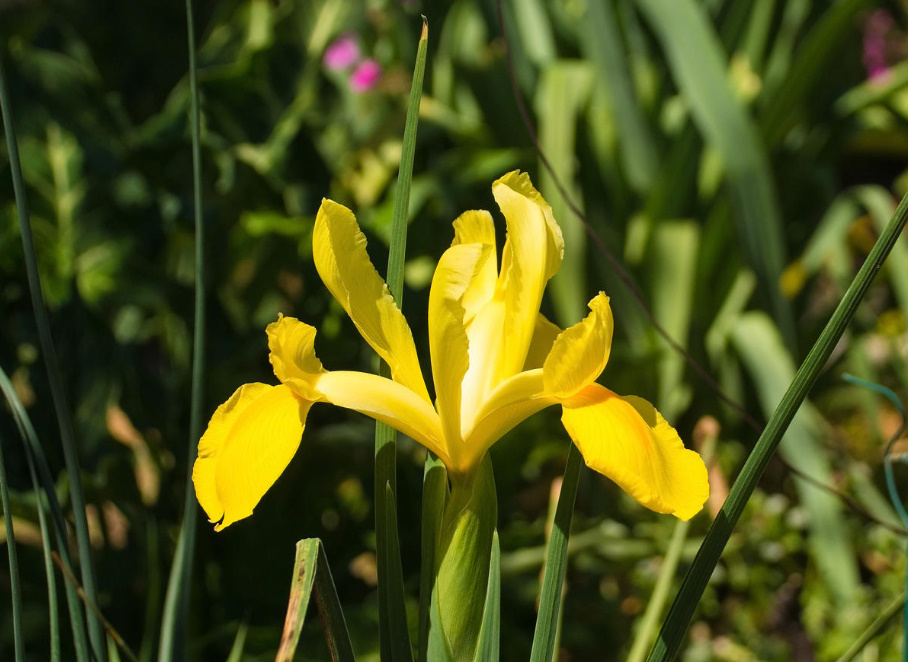
The leaves are xiphoid, 75 cm long. In early summer , up to 20 yellow flowers with a diameter of 12-18 cm bloom on one plant . It looks exotic in spring mixborders. Suitable for curbs.
Iris graminea
I. graminea, syn. I. colchica, is a perennial with a height of 20-40 cm with a creeping branched rhizome. It is native to the north-east of Spain; it is found on the territory of the Western Caucasus.
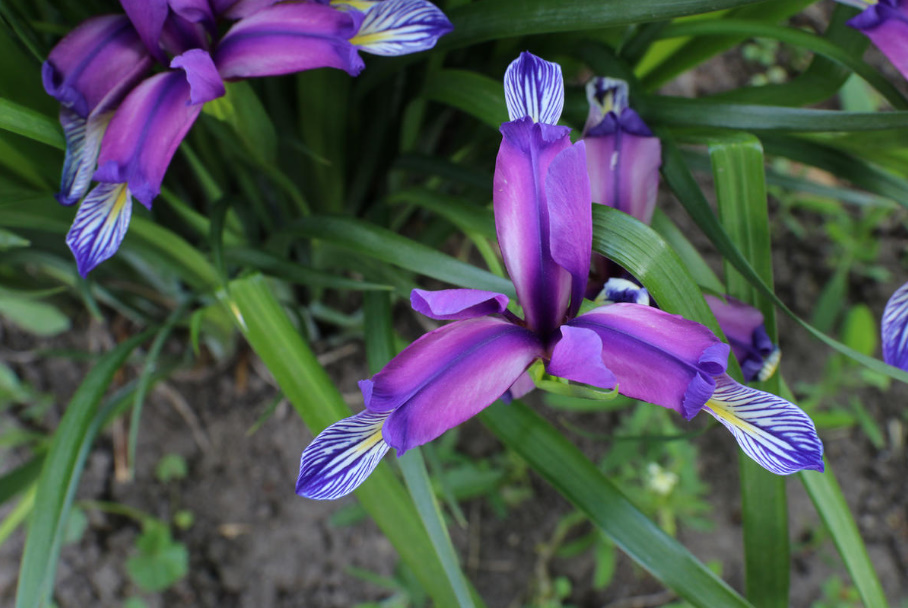
The leaves are linear or linear-xiphoid, 30 cm long. The flowers are purple-purple, with a light yellow stripe in the center and purple veins, 7 cm in diameter, with a fruity aroma, 1-2 pieces on one peduncle, bloom in mid-May. The fruits ripen in September-November.
It looks luxurious in groups in mixborders (about 6 plants are planted on 1 m2), it is suitable for planting in curbs, it will help set the rhythm for narrow and long rabatki. Good for cutting.
Iris kerneriana
I. kerneriana is a beautiful perennial 30-50 cm tall native to Northern Turkey.
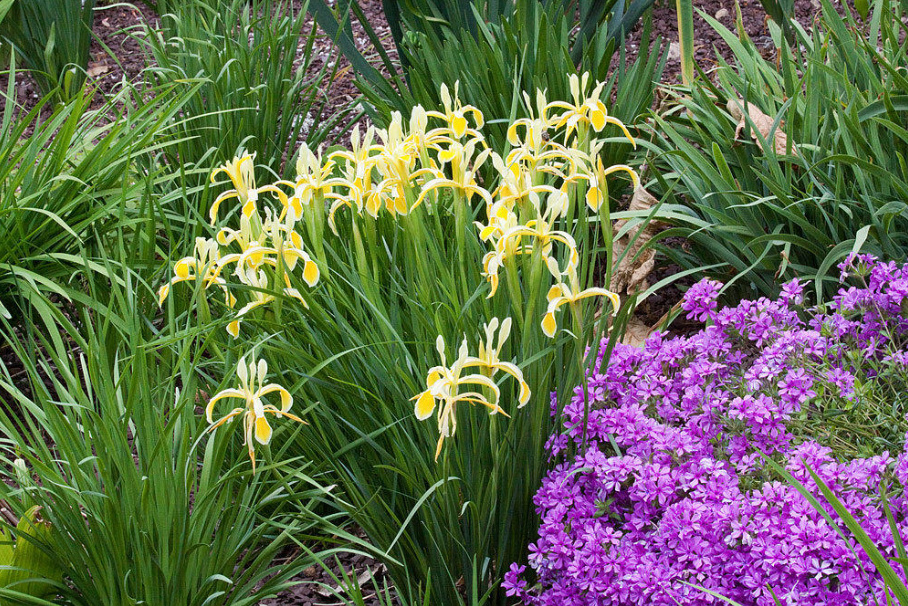
Linear leaves up to 40 cm long . 2-4 lemon-yellow flowers with a diameter of 7-10 cm are formed on erect peduncles. Blooms in early summer. It will find its place in mixborders next to relatives — bearded irises (preferably with purple flowers). In contrast, it will look beautiful with variegated hosts (preferably with a yellow border).
Iris orientalis
I. orientalis, syn. I. ochroleuca is the most common iris spuria in culture up to 90 cm high. He is originally from Northeastern Greece, Western Turkey.
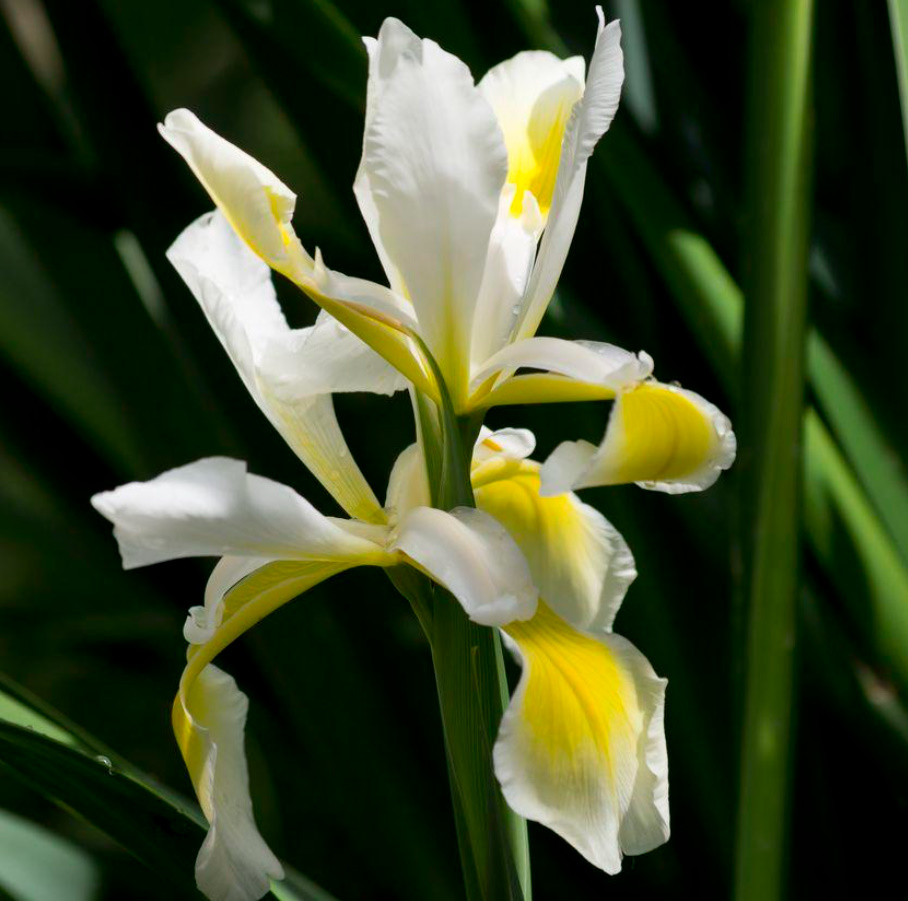
Leaves up to 90 cm long . Peduncles up to 90 cm high, with 3-5 flowers. The flowers are white-yellow, 8-10 cm in diameter. Suitable for iris borders and for cutting.
Iris spuria
I. spuria is a strong rhizomatous perennial up to 90 cm tall . He is originally from Southern Europe, Central Asia.
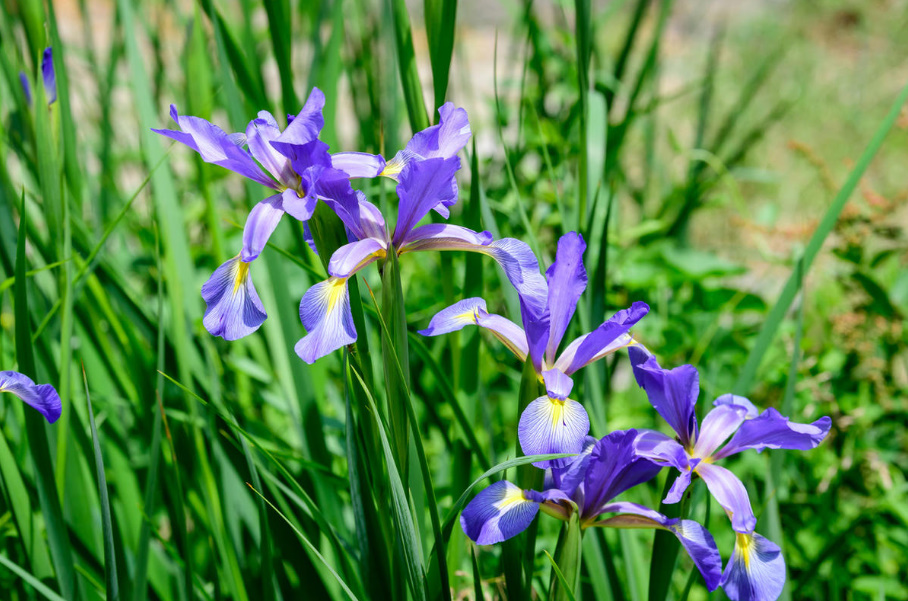
Leaves are 30 cm long . The flowers are blue, yellow or white, 6-8 cm in diameter; they bloom in early or mid-summer. It is suitable for mixborders with bearded irises, where it accepts and continues the rainbow relay of flowering. You can make a chic iris border out of it.
Iris pseudonotha
I. pseudonotha is a perennial herbaceous plant with a height of 50-60 cm with a powerful root system. He is originally from the North Caucasus.
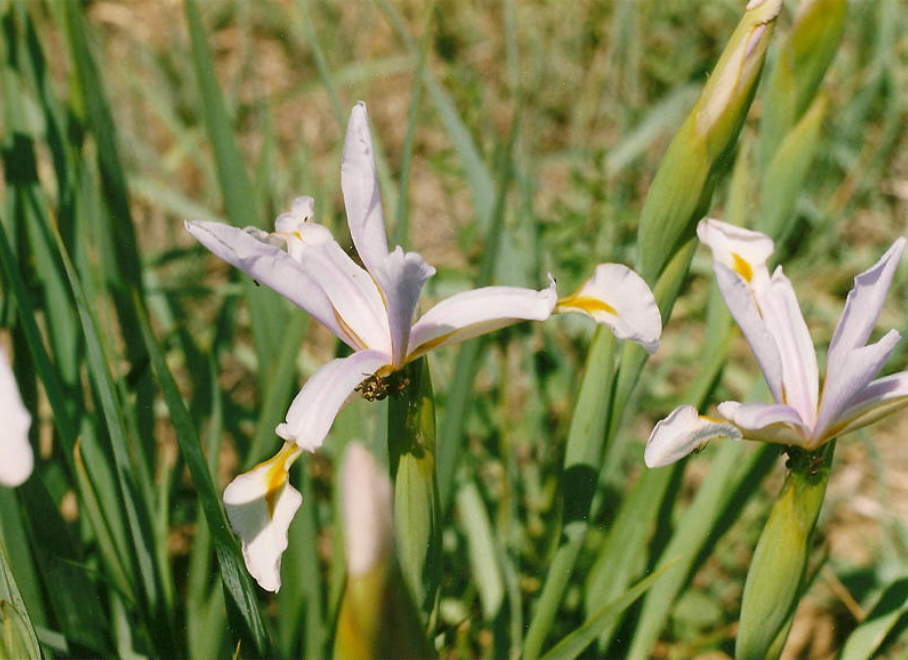
The leaves are dark green, 40-60 cm long. On one peduncle, 4-5 white or bluish-lilac flowers with a diameter of 8-9 cm bloom from top to bottom. Blooms from the 3rd decade of May to the 2nd decade of June (in the south). The fruits are brown boxes, ripen in August or September. It is beautiful in mixborders with hosts, aquilegia, Digitalis. Cut flowers stand in the water for a long time, they are well transported. Planting density — 6 pcs. per 1 m2.
Iris monnieri
I. monnieri is a herbaceous perennial up to 1 m tall, with a creeping branched rhizome and a loose bush structure. He is originally from the Mediterranean.
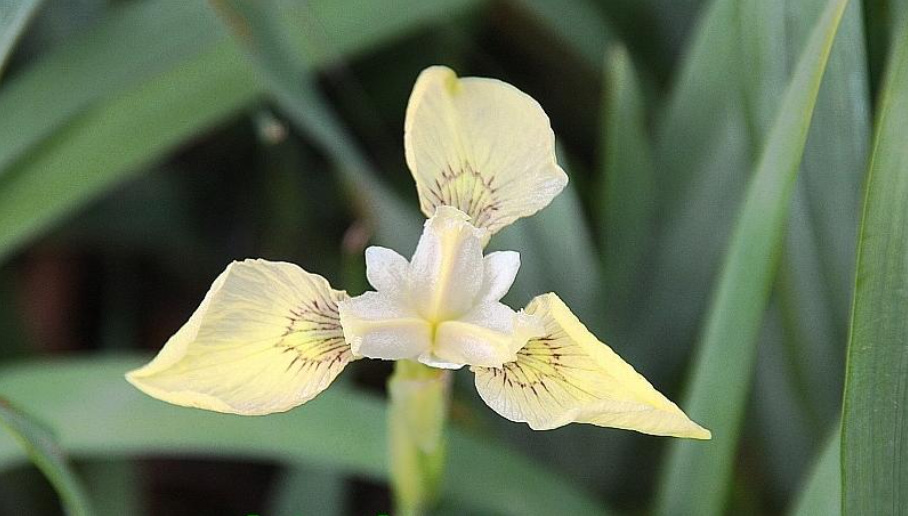
The leaves are green, with a bluish bloom. The flowers are white, 9-11 cm in diameter, located in the upper part of the peduncle, in an amount of 3-5 pieces; they bloom in the 3rd decade of May. The fruits are boxes, ripen in August. In the south , it winters with young overgrown shoots 20-30 cm long . It is luxurious in flower beds and in cutting. It is enough to plant 4 plants on 1 m2.
Iris notha
I. notha is a perennial with a well—developed root system, up to 70 cm high. Endemic (a species that occurs only in a certain territory) of the Pre-Caucasus.
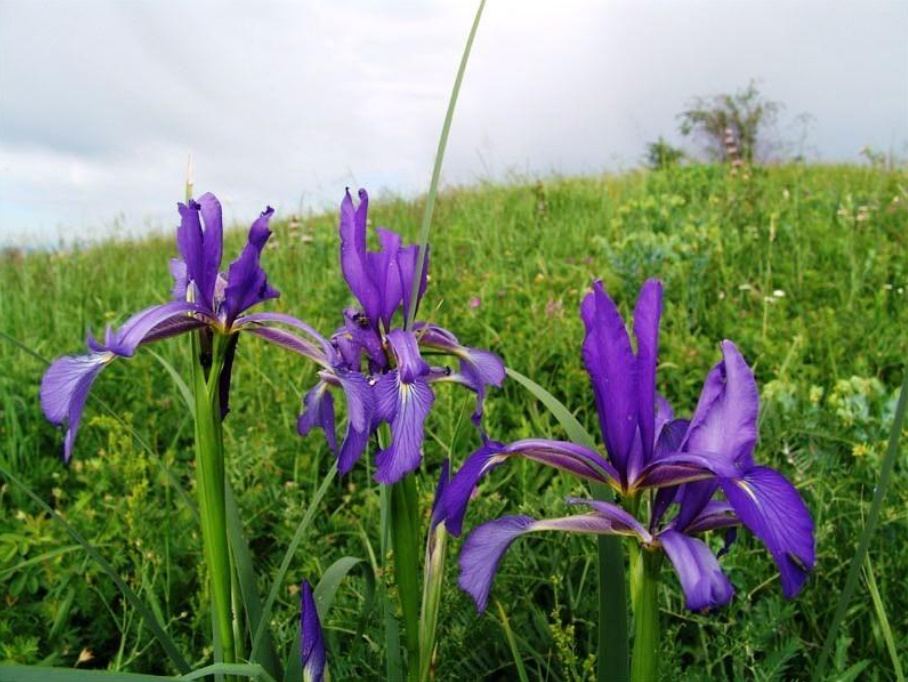
The leaves are broadly linear, up to 80 cm long, flowers with an unusually clear shape, violet-blue, up to 11 cm in diameter, 3-4 pieces per peduncle, bloom one by one in the first half of June (this is one of the most late-flowering species). Likes well-drained elevated areas; 6 pieces are planted on 1 m2.
Iris halophila
I. halophila is one of the most suitable for growing in the middle belt. In nature, it can be found on the territory of Eastern Europe, the Caucasus, Central and Central Asia.
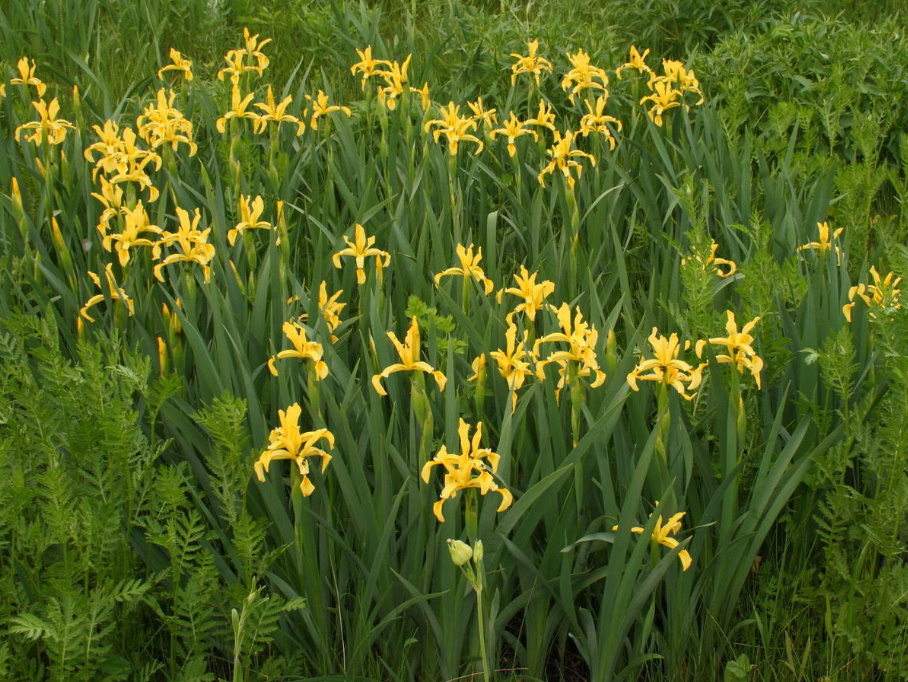
A perennial with a height of 70-100 cm . One peduncle bears 3-4 flowers. The flowers are yellow, with greenish spots; they bloom in May-June.
Its decorative variety is var. sogdiana.
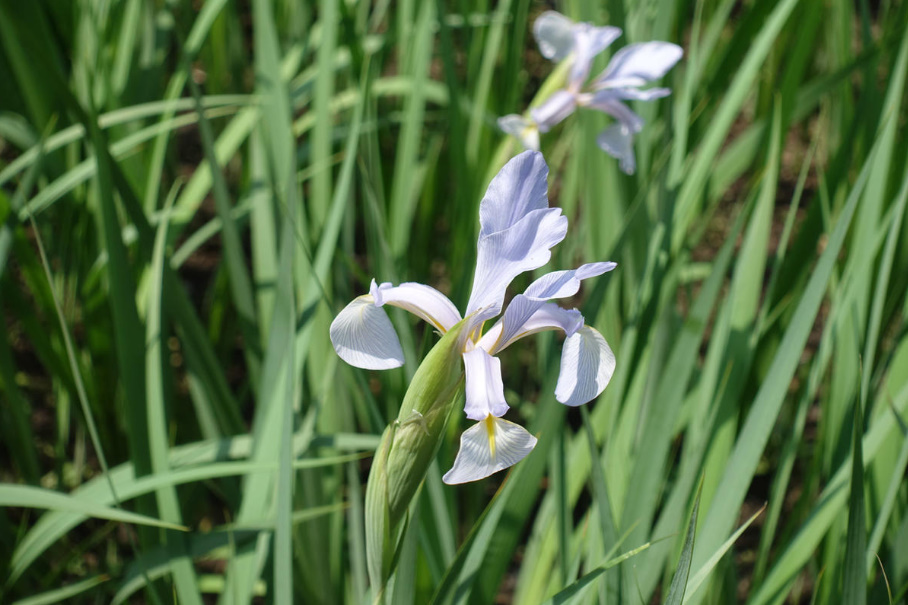
Suitable for growing in the middle lane. Perennial up to 50 cm high . The leaves are xiphoid, pointed at the tip. The flowers are pale blue or purple, with yellow spots.
Both irises are good in groups in mixborders. They can grow on problematic soils, as indicated by the species name.
And in conclusion — questions from the author: do you grow irises spuria? What do you like about them?



